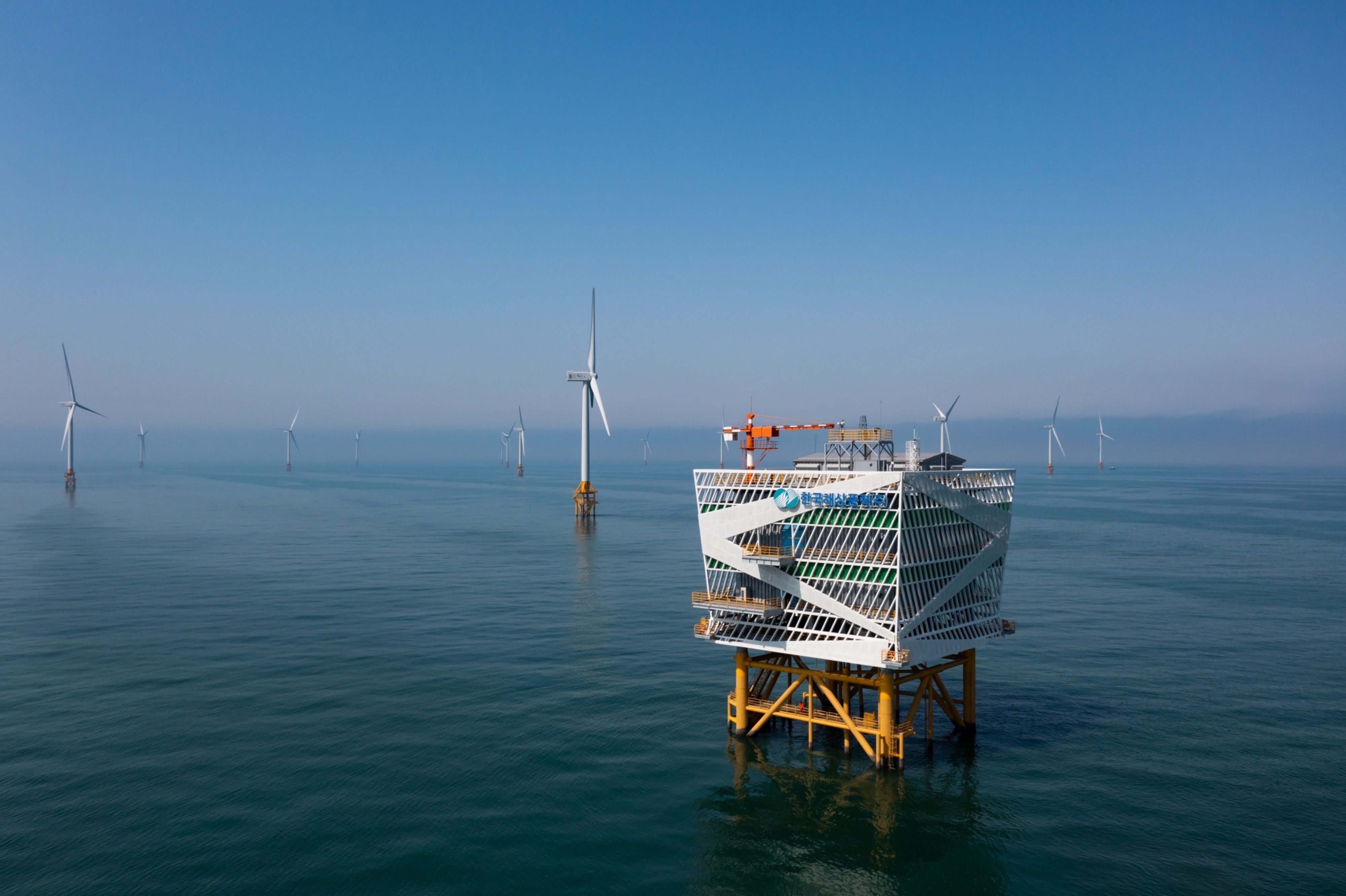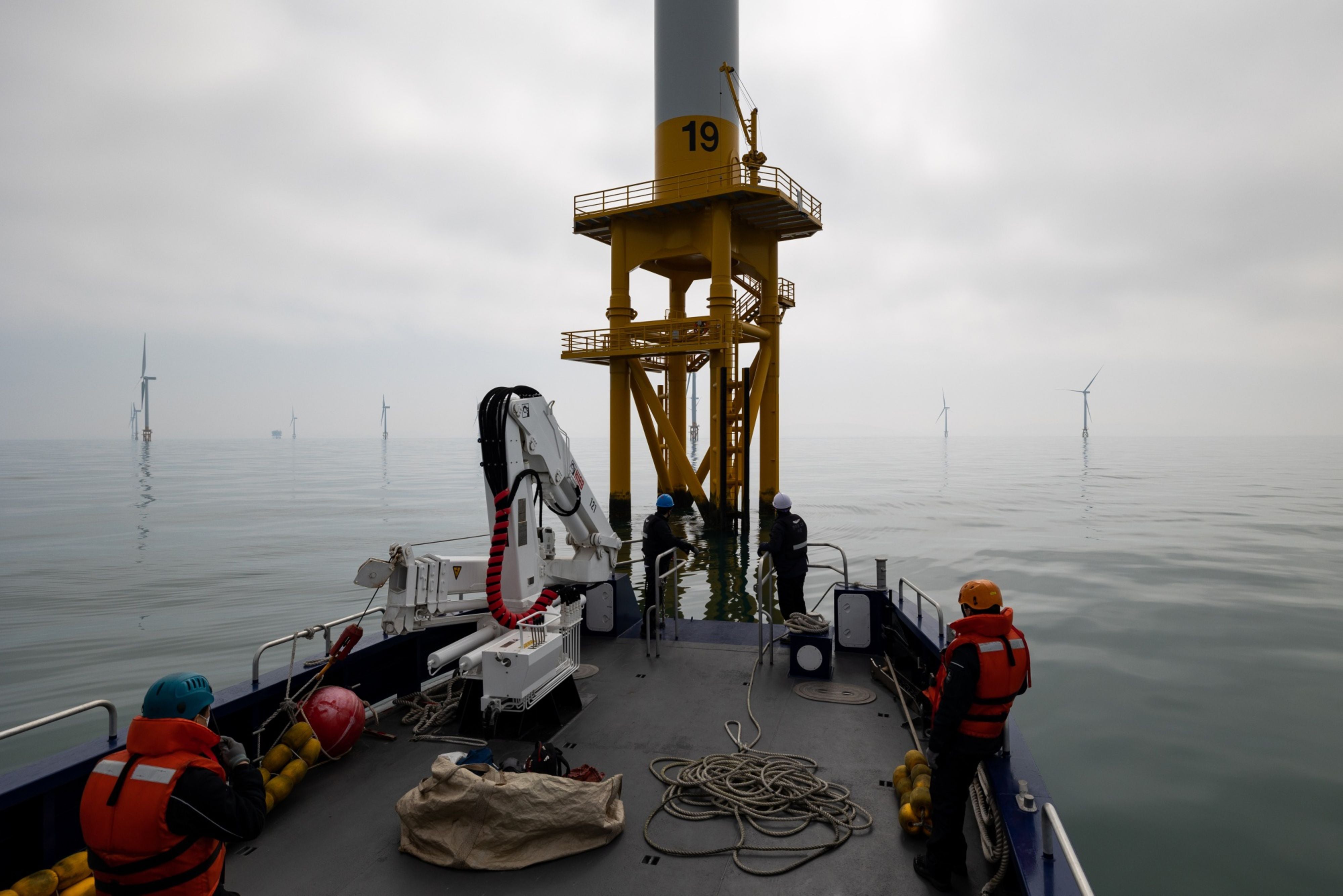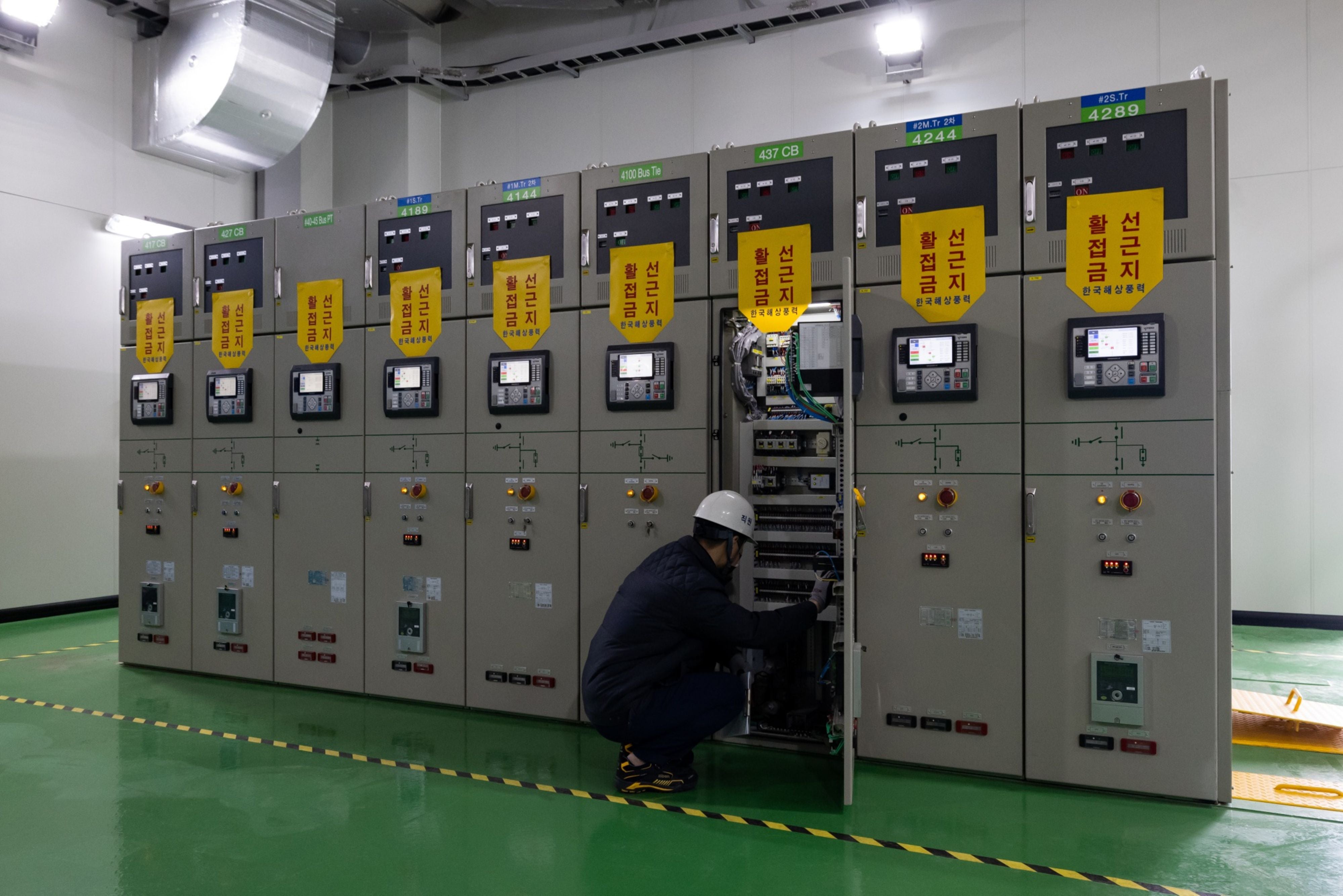How the world’s biggest wind farm may help South Korea’s net-zero dream
The end of generations of fishermen off the coast of South Korea could be contentious but many are coming to terms with it, knowing carbon neutrality is absolutely necessary, writes Heesu Lee and Will Mathis

Your support helps us to tell the story
From reproductive rights to climate change to Big Tech, The Independent is on the ground when the story is developing. Whether it's investigating the financials of Elon Musk's pro-Trump PAC or producing our latest documentary, 'The A Word', which shines a light on the American women fighting for reproductive rights, we know how important it is to parse out the facts from the messaging.
At such a critical moment in US history, we need reporters on the ground. Your donation allows us to keep sending journalists to speak to both sides of the story.
The Independent is trusted by Americans across the entire political spectrum. And unlike many other quality news outlets, we choose not to lock Americans out of our reporting and analysis with paywalls. We believe quality journalism should be available to everyone, paid for by those who can afford it.
Your support makes all the difference.The grounds where Jung Kuenbae and his forbears have caught fish for three generations are going to be turned into the world's largest offshore wind farm and he’s not bothered.
“I initially opposed the idea when the plan was proposed because it will destroy our livelihood,” said Jung, who leads a group of local fishermen in 200-odd ships that drop nets off the southwestern tip of the Korean peninsula. “But I realised the project is part of the country’s transition to cleaner energy, which is something we have to come to terms with, rather than fighting against it.”
The 48.5 trillion won (£31.5bn) wind farm, to be built over a decade, would generate up to 8.2 gigawatts of power and is one of a catalogue of grand projects the government wants with private-sector backing to meet its ambition of becoming carbon neutral by 2050.
Read More:
It’s a momentous challenge. South Korea’s industrial ascent since the 1960s has made it one of the world’s top 10 energy users. Electricity consumption per capita is above both Japan and Germany and two thirds of that comes from fossil fuels. Renewable energy accounted for only 6.5 per cent of generation in 2019. Nuclear makes up the balance.
“South Korea will have to source almost all of its electricity from renewable energy if it’s ever going to reach climate neutrality by 2050,” says Lee Sanghoon, president of the New and Renewable Energy Center at the Korea Energy Agency, “a daunting task”.
To ease conflict with the community, the Shinan government in 2018 passed rules allowing them to acquire a 30 per cent stake in local renewable energy projects
A record 96.3 gigawatts of wind turbines were installed globally last year, according to clean energy research group BloombergNEF, enough to power about 36 million US households. The International Energy Agency estimates that at least 160 gigawatts of wind has to be added per year by 2025 in order to meet Paris Agreement goals.
President Moon Jae-in’s Democratic Party stayed in power last year on the promise of a “Green New Deal”. It has brought a new urgency to the transition, with a proposal to get more than 20 per cent of energy from renewables by 2030. For South Korea, it’s not just about curbing emissions. Apart from a tiny amount of gas and coal, all its fossil fuels are imported, costing the nation £53bn a year.
With its conventional hydropower resources almost fully utilised and a climate and topography ill-suited for large solar and onshore wind plants, the country is looking out to sea. It already has the world’s biggest tidal power plant at Sihwa Lake but the government sees one of its best prospects is to harness 12 GW from offshore wind by 2030, compared with less than 0.2 GW now.
The open seas have more consistent wind speeds and provide space to install the biggest, most-efficient turbines. Just by using sites in shallow water that are near to shore, the world could get enough electricity to meet all global demand. With floating turbines that go further out to sea, wind power could satisfy more than 10 times the world’s total electricity demand by 2040, an IEA analysis showed.

So far, Britain, Denmark and Germany have dominated the offshore wind industry, thanks to generous government subsidies and unusually shallow waters of the North Sea. But that’s starting to change. Last year, China installed a record number of offshore wind turbines to become the world leader in total capacity. US President Joe Biden’s administration plans to rapidly increase wind farms off its east coast.
About 80 miles from the Korean island of Shinan, where fisherman Jung lives, maintenance workers in helmets and orange life jackets climb a 200 metre tower at the nation’s biggest existing commercial offshore wind farm, 30 minutes by boat from the port of Buan. The project’s 60 MW capacity is less than 1 per cent of the proposed new wind farm in Shinan.
The complex, in the Southwest Sea, will be expanded to 2.46 GW after 2027, according to Korea Offshore Wind Power Corp.
One of the major challenges to achievement is local opposition. A BloombergNEF report in September predicted that South Korea could fall short of the government’s target wind power by 4.6 GW, mainly due to “severe opposition” from locals.
To ease conflict with the community, the Shinan government passed rules allowing them to acquire a 30 per cent stake in local renewable energy projects. That will provide a windfall for residents of six of the islands in the archipelago this month when last year’s profits from two solar plants are distributed.

“Renewable energy will become a stable source of income for Shinan residents, who are mostly in their 70s and 80s,” said Kim Jung Dae, 63, a farmer who represents a group of locals. “I wouldn't be surprised if Shinan became the most well-off island in the country.”
There are other challenges. Wind power in South Korea currently costs about $220 per megawatt hour, according to IHS Markit, among the highest in the world.
“You’d need the wind to blow at 13 metres per second all day every day to run at full capacity of 8.2 gigawatts, which is impossible,” said Joo Han Gyu, a professor at Seoul National University’s department of nuclear engineering. “The economics of these wind turbines make no sense and the increased cost will eventually fall upon individuals.”
South Korea’s wind ambitions also rely on a sustained effort from dozens of private companies. The Shinan wind project, for example, is composed of about 20 separate ventures by corporations including SK E&S Co and Hanwha Engineering & Construction. That means plans could get scrapped or modified as each company goes through the long process of obtaining permits and calculating costs.
To help accelerate installations, a “one-stop shop” bill will be proposed in the first half of this year that will allow the government to take the helm in exploring potential offshore sites and getting required permits, says Yoon Sunghyuk of the Ministry of Trade, Industry and Energy.
Read More:
One answer may be to develop floating plants that can be moored further out than fixed turbines, which are limited to shallow water, said Lee Sanghoon from the Korea Energy Agency. Several such projects are planned by companies including Korea National Oil Corp. and Equinor ASA, which aim to jointly construct a 200-megawatt complex in the East Sea near Ulsan.
For Jung, sitting in his office, the country’s interest in offshore wind has led him to see the energy transition as an opportunity, rather than the end of his career.
“No one knows the sea here better than us. I’m sure there will be plenty of work we can do,” Jung said. “If you can’t turn the tide, it’s better to embrace the flow.”
© The Washington Post
Join our commenting forum
Join thought-provoking conversations, follow other Independent readers and see their replies
Comments